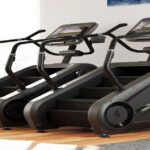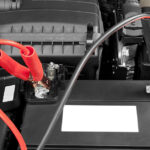Roller doors offer a practical, space-saving solution for Australian garages and warehouses. As per experts like Steel-Line When determining your supply and installation approach, some key considerations apply across residential and commercial projects. Follow this comprehensive guide covering roller doors supply and install including measuring, product selection, hiring contractors, costs, and factors impacting the process from start to finish.
Step 1 – Accurately Measure the Opening
The first step involves using a steel tape measure to capture opening width at both top and bottom, along with exact height from floor to header. For vehicles, factor an extra 30 cm clearance on both sides. Record the vertical clearance as well to accommodate track placement. Knowing precise measurements ensures ordering a door that fits the first time.
Step 2 – Choose Design & Materials
Next, select your preferred aesthetic design from flat panel, ribbed, contemporary cassettes or retro styles. Material and insulation options include colorbond steel, aluminium, acrylic glass inserts, mesh screens and polyurethane foam. Each strikes an optimal balance across insulation, durability, privacy and pricing needs. Locking mechanisms range from keypads and remotes to pull-chords and switches.
Step 3 – Select an Authorised Dealer
Research and select an authorised roller door brand dealer who provides measuring, quotes, supply, professional installation and follow-up service Calls. Check ratings, reviews and certifications ahead of time for quality reassurance. Obtain an itemised quote accounting for door supply, hardware, tracks, remotes, labour, permits and warranty inclusions.
Step 4 – Place Orders & Schedule Installation
Once quote approvals are complete, dealers place orders with local manufacturers reflecting accurate sizing and customisation selections. Quality checked doors ship within a few days, then professional installers schedule site visits. Permits for new commercial installs can add brief delays. Overall, standard lead time spans 2 to 4 weeks from order to functioning doors.
Step 5 – Installation Day Arrives
On installation day, trained technicians affix and secure tracks before fitting the custom roller door. They adjust mechanisms for smooth operation while verifying safety features function properly. Permits get closed out with final council inspections. Lastly, dealers provide home or business owners with spare remotes, manuals and warranty booklets for reference.
Step 6 – Make Final Payment & Enjoy
Once owners verify satisfactory operation, the final quoted costs are paid to the dealer via preferred payment methods. Then, it is time to enjoy the benefits of space optimization, insulation, safety and convenience that reliable roller doors provide for decades to come. Plus easy maintenance via affordable yearly service plans from the original dealer down the road.
Conclusion
New roller door projects start with detailed site measurements followed by customised product selections to suit functional needs, aesthetics and budget. Then authorized local dealers oversee trusted manufacturer supply, professional installation, council sign-offs and homeowner education from start to finish. Following the steps in this guide ensures fast turnaround along with doors that fit, operate and look great permanently. For new installs or retrofits in existing garages and warehouses, partnering with licensed regional dealers guarantees roller door success.
ALSO READ: Why Investing in Impact Doors is a Smart Decision for Homeowners











